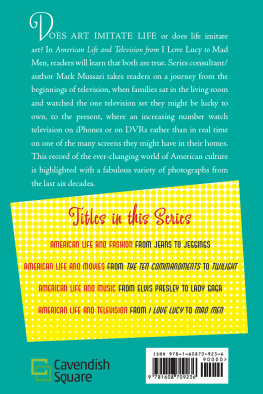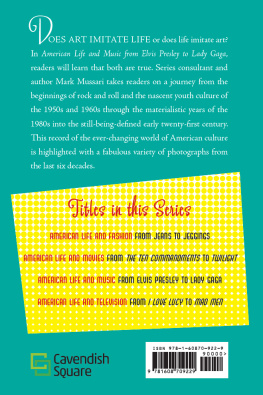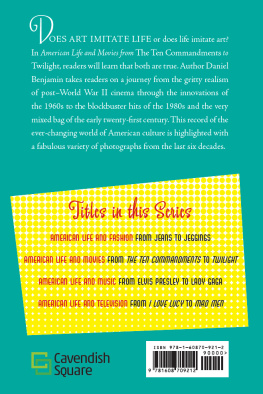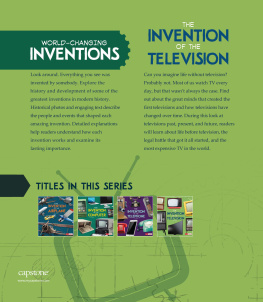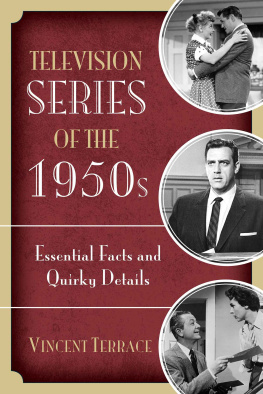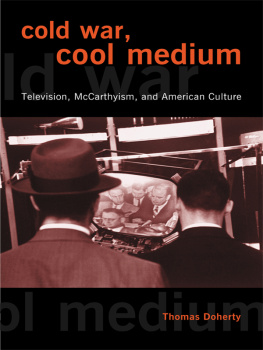Published in 2014 by Cavendish Square Publishing, LLC
303 Park Avenue South, Suite 1247, New York, NY 10010
Copyright 2014 by Cavendish Square Publishing, LLC
First Edition
No part of this publication may be reproduced, stored in a retrieval system, or transmitted in any form or by any meanselectronic, mechanical, photocopying, recording, or otherwisewithout the prior permission of the copyright owner. Request for permission should be addressed to Permissions, Cavendish Square Publishing, 303 Park Avenue South, Suite 1247, New York, NY 10010. Tel (877) 980-4450; fax (877) 980-4454
Website: cavendishsq.com
This publication represents the opinions and views of the author based on his or her personal experience, knowledge, and research. The information in this book serves as a general guide only. The author and publisher have used their best efforts in preparing this book and disclaim liability rising directly or indirectly from the use and application of this book.
CPSIA Compliance Information: Batch #WS13CSQ
All websites were available and accurate when this book was sent to press.
Library of Congress Cataloging-in-Publication Data
Mussari, Mark.. American life and television from I Love Lucy to Mad Men / Mark Mussari.
p. cm. (Pop culture). Summary: Provides a comprehensive look at the history of television in AmericaProvided by publisher.
Includes bibliographical references and index.
ISBN 978-1-60870-923-6 (hardcover)ISBN 978-1-62712-123-1 (paperback) ISBN 978-1-60870-928-1 (ebook)
1. Television programsUnited StatesHistory.
2. Television broadcastingUnited StatesHistory. I. Title.
PN1992.3.U5M873 2013. 791.450973dc23. 2011036023
Series Consultant: Mark Mussari Art Director: Anahid Hamparian
Series Designer: Alicia Mikles Photo research by Lindsay Aveilhe
The photographs in this book are used by permission and through the courtesy of:
Cover photo courtesy of AMC/The Kobal Collection and CBS-TV/The Kobal Collection. Pictorial Press Ltd/Alamy: p. 5; Bettmann/Corbis: p..
Printed in the United States of America
Contents
INTRODUCTION
1950s: TELEVISIONS GOLDEN AGE
1960s: IN LIVING COLOR
1970s: CHANGING VALUESCHANGING TIMES
1980s: EXPANDING HORIZONS
1990s: SETTING NEW STANDARDS
2000s: REALITY AND REALITY TV IN THE FIRST DECADE
CONCLUSION
NOTES
FURTHER INFORMATION
BIBLIOGRAPHY
INDEX
In the early 1950s, only about half of all American homes had a television set. Families would gather around the set at night, and sometimes even invite in their neighbors who could not afford a television of their own.
Introduction
ITS DIFFICULT TO IMAGINE A WORLD without television. Yet even in the years immediately following World War II (19391945), most Americans did not own televisions. The technology was new and sets were expensive. In fact, only 0.5 percent of households had television sets in 1946. By 1954 that number had jumped to 55.7 percent, and it skyrocketed to 90 percent in 1962. Television became an integral and pervasive part of American culture. Today, it is common for most households to own more than one television.
Television is a powerful cultural medium for a number of reasons. First and foremost, it has bought profound and historic moments into viewers homes, from a man landing on the moon to an athlete winning a gold medal at the Olympics to presidential inaugurations.
Second, television reaches across all segments of society rich and poor, young and old, urban and rural, and all ethnicities and races. People from diverse backgrounds can enjoy the same situation comedy (commonly known as a sitcom), drama series, or talk show, uniting them in a shared cultural experience.
Third, television connects people globally by enabling them to view news and entertainment programs from different countries. Almost every country in the world has at least one broadcasting network, and many countries show television programs from other parts of the world. The television phenomenon American Idol actually began in the UK, but was called Pop Idol. There have been versions of Idol in Bulgaria, Turkey, Norway, and Vietnam.
Since the 1950s, television has been an integral part of popular culture. Popular television programming reflects the culture we live in and, at the same time, influences attitudes, styles, and values. From I Love Lucy to The Twilight Zone, from The Carol Burnett Show to Friends, from Dragnet to Mad Men television programs have affected our collective consciousness. They have entertained us and moved us in ways that no other medium could.
Even though television is sometimes called the boob tube and the idiot box, television programs can also make us think about important issues and ideas. For better or worse, television has helped make many of us who we are todayboth as people and as nations.
ONE
The 1950s:
Televisions Golden Age
IN THE UNITED STATES, THE ERA FOLLOWING World War II was a time of great expansion and growth. Many soldiers returned home from war and entered the workforce. The economy boomed and families moved out of cities and into newly formed suburbswith new schools, new roads, and new shopping centers. The automobile became an essential part of American life. Gasoline was cheap, and new highways connected cities and states, making travel easier than ever before.
American citizens began taking a greater interest in national affairs. Television, like much of popular culture, played a major role in connecting Americans from all walks of life. The powerful visual impact of televised news programs slowly drew families away from gathering around the radio for news and information, and influential broadcast journalists like Edward R. Murrow became household names.
Because of a large growth in population during the late 1940s and 1950s, the generation known as the baby boomers was the first to be raised sitting directly in front of this new and influential medium. Decades would pass before the immense power of television became clear.
BEGINNINGSTHE 1940S
Looking at the limited television schedules throughout the mid1940s, one would assume that people watched mostly sports and news. Programs were transmitted in black and white, as color television sets did not yet exist. Popular shows included Gillette Cavalcade of Sports (sponsored by the razormaking company Gillette), Boxing from Jamaica Arena, and Sports from Madison Square Garden. An occasional entertainment program popped up. For example, Broadway Preview offered sneak previews of upcoming Broadway plays. Faraway Hill, the first ongoing soap opera, debuted in October 1946.
That same year Kraft Television Theater debuted on NBC. It was the first time that a drama series was not only sponsored by a major company (Kraft) but was also produced by an agency outside the network. At the time, networks usually produced their own shows, including dramas. Perhaps even more importantly, Kraft had found a good place to advertise one of its products: cheese! The Kraft brand became a huge success, thanks to two straight weeks of heavy advertising.
Television as a powerful advertising tool had truly been born. Not only was television an unparalleled means of mass communication, but it was also becoming the greatest advertising medium in the world. Televisions ability to reach such a wide audience had a profound and lasting effect on its influence on popular culture. The children now known as the baby boomers were the first generation to be affected by the influential power of television.

